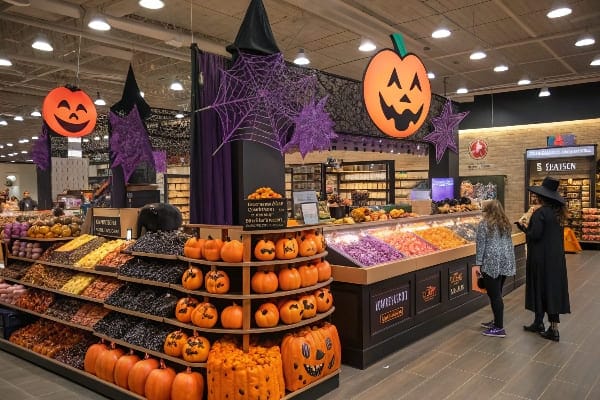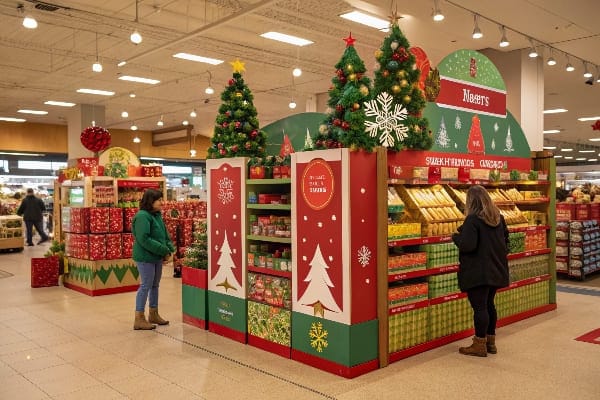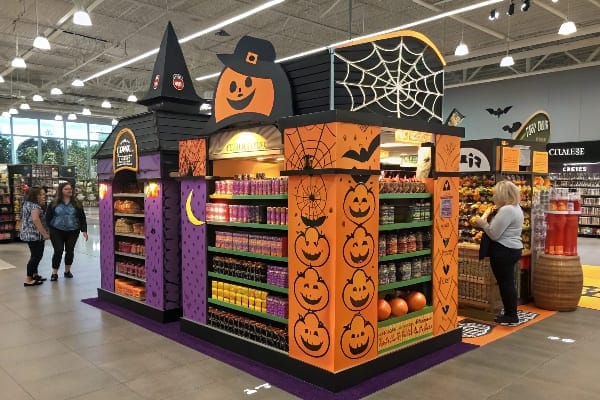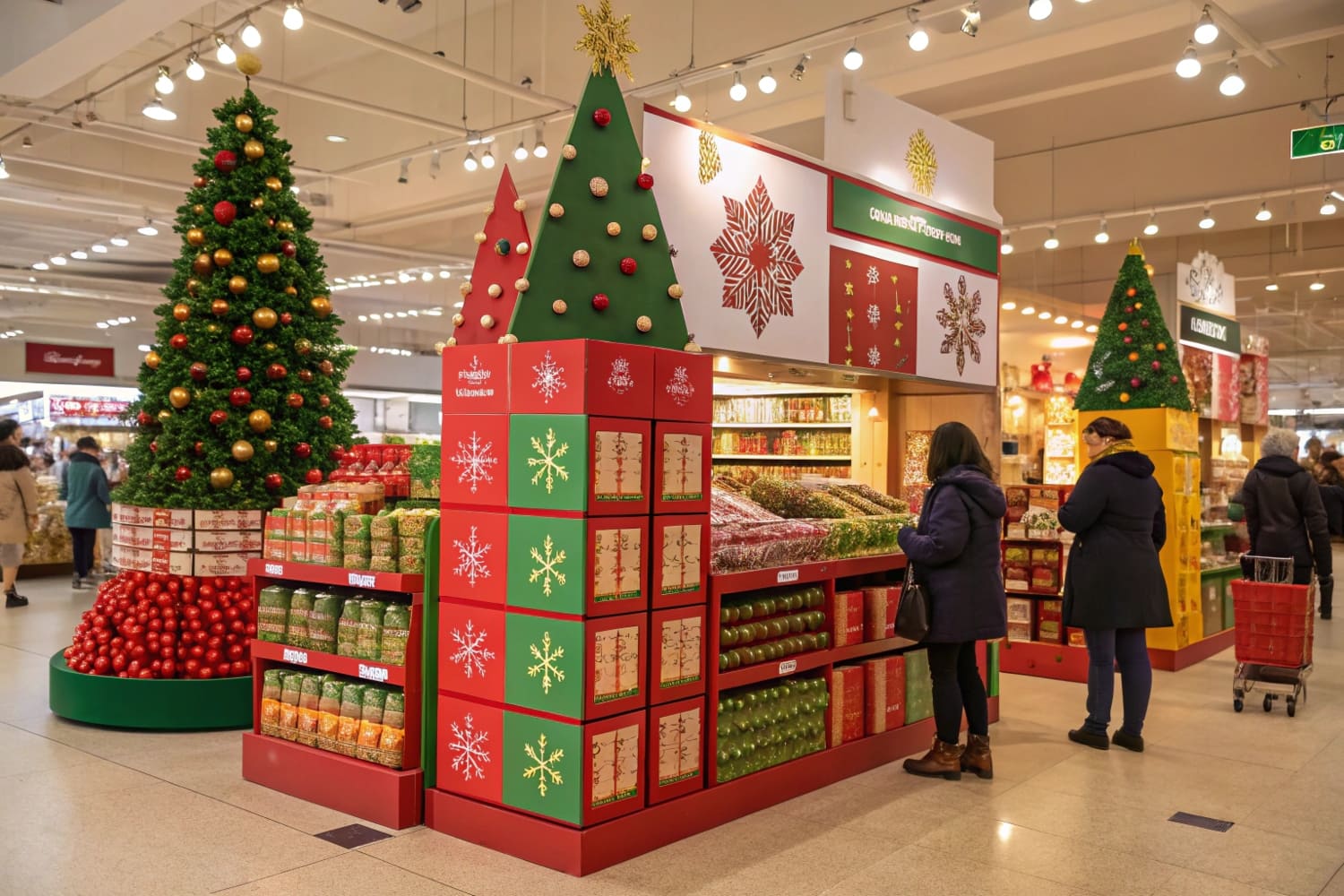季节性展示是一种强大的营销工具。他们引起人们的注意,反映一年中的时间,并触发与假期或季节性变化有关的特定情绪。在本文中,我们将深入了解季节性展示以及它们如何提升您的业务。
季节性展示是与一年中特定时间保持一致的临时设置。它们旨在突出与特定季节相关的产品或服务,使它们向客户脱颖而出。

随着季节的变化,消费者的喜好也随之变化。通过利用季节性趋势,企业可以为客户创造更具影响力的视觉体验。让我们探索是什么使这些显示在提高零售销售方面如此有效。
什么是季节性展示?
季节性展示不仅仅是装饰设置。它们是一种战略营销工具,可推动销售,引起关注并建立品牌标识。
季节性展示是一种醒目的设置,根据季节变化。它促进了与一年中特定时间有关的产品,例如圣诞节,夏季或返校季节。

季节性显示是向客户传达及时消息的有效方法。他们利用不同季节的购物者的情绪和需求不断变化。例如,在假期期间,商店可能会在春季或礼品物品展示户外家具。这些显示器会产生紧迫感和相关性,激励客户进行购买。
在零售业中,视觉商品1季节性展示中起关键作用2 。让我们仔细研究哪种季节性视觉商品销售3所涉及。
什么是季节性视觉销售?
季节性视觉销售是设计和安排展示的艺术,其方式与当前季节的主题,颜色和事件产生共鸣。
季节性视觉商品是指零售展示的战略安排和设计,以反映季节性变化。它使用配色方案,照明和道具等元素来增强购物体验。

执行良好的季节性视觉商品销售4策略攻击客户的季节性期望和欲望。例如,春季视觉效果可能包含粉彩和花卉设计,而秋天可以使用温暖的色调和质朴的元素。这种类型的商品旨在与客户建立联系,使他们感受到季节并鼓励他们购买可能没有考虑的物品。
有效的季节性视觉商品不仅依赖美学;它考虑了客户心理学5和购物习惯6 。让我们探讨季节性商品如何与这种方法联系起来。
什么是季节性商品?
季节性商品是指在一年中某些时间特别重要的产品。这些项目通常与每个季节的需求,偏好和庆祝活动保持一致。
季节性商品包括一年中特定时间内需求的产品,例如万圣节服装,夏季服装或冬季配饰。

季节性商品7的关键是它及时的相关性。当零售商在夏季或冬季供应泳衣等季节性物品时,它们会利用季节性需求。零售商可以通过策划客户在有限的时间内需要的商品的收集来显着增加销售,从而使购物者更容易在不三思而后行事。
季节性产品的销售策略通常需要快速营业额和高知名度。随着趋势在季节性的变化,企业必须适应以避免被过时的商品陷入困境。现在,让我们深入了解业务中的季节性模式如何在制定这些策略中起着至关重要的作用。
什么是业务中的季节性模式?
业务中的季节性模式是指全年在特定时间发生的需求的反复波动。这些模式是可以预测的,并且与假期,天气变化和文化事件有关。
业务中的季节性模式是一年中某些时间发生的消费者需求的可预测趋势,例如假期期间的高峰销售额或非高峰时段的需求量下降。

了解这些模式对于企业至关重要,因为它使他们能够相应地计划库存,人员配备和营销工作。在关键季节(例如假日购物期或返校月份),零售商经常会在需求9中经历激增9。了解这些峰值和低谷何时发生,可以帮助企业准备供应链并优化销售策略10 。
此外,重要的是要预测本赛季的结束。例如,在夏季结束后,企业可能会提供折扣,以清除剩余的季节性商品库存。通过跟踪这些模式,公司可以全年最大化其盈利能力。
结论
季节性展示,视觉销售和理解季节性模式可以大大推动您的零售策略。正确完成时,这些策略在情感层面上与客户联系起来,推动销售并增强品牌忠诚度。
了解视觉商品销售在吸引客户和提高销售效果方面的关键作用。 ↩
探索季节性展示如何增强客户参与度并在零售环境中提高销售。 ↩
发现季节性视觉销售的创新策略,可以提升您的零售空间并吸引更多客户。 ↩
发现有关季节性视觉销售的有效策略和见解,以增强您的零售方式并与客户建立联系。 ↩
了解客户心理学可以大大改善您的营销策略,并通过与消费者行为保持一致来提高销售。 ↩
保持最新的购物习惯趋势,以量身定制您的销售策略并有效地满足客户期望。 ↩
探索此链接,以学习优化季节性商品并在高峰时段提高销售的有效策略。 ↩
了解季节性模式可以增强您的业务策略,从而确保您全年有效地满足客户需求。 ↩
了解需求激增的因素可以帮助企业有效地制定战略并提高销售。 ↩
探索有效的销售策略可以提高盈利能力,并确保企业为季节性波动做好准备。 ↩

